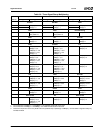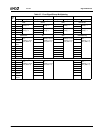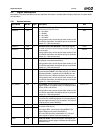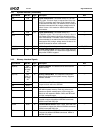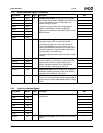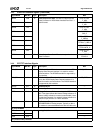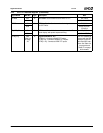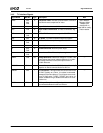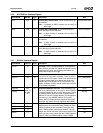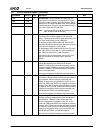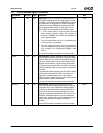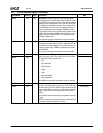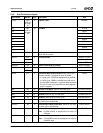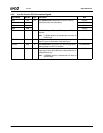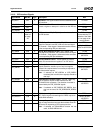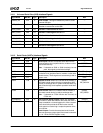
AMD Geode™ SC1200/SC1201 Processor Data Book 55
Signal Definitions
32579B
3.4.6 ACCESS.bus Interface Signals
Signal Name Ball No. Type Description Mux
AB1C N31 I/O ACCESS.bus 1 Serial Clock. This is the serial clock for
the interface.
Note: If selected as AB1C function but not used, tie
AB1C high.
GPIO20+DOCCS#
AB1D N30 I/O ACCESS.bus 1 Serial Data. This is the bidirectional
serial data signal for the interface.
Note: If AB1D function is selected but not used, tie
AB1D high.
GPIO1+IOCS1#
AB2C N29 I/O ACCESS.bus 2 Serial Clock. This is the serial clock for
the interface.
Note: If AB2C function is selected but not used, tie
AB2C high.
GPIO12
AB2D M29 I/O ACCESS.bus 2 Serial Data. This is the bidirectional
serial data signal for the interface.
Note: If AB2D function is selected but not used, tie
AB2D high.
GPIO13
3.4.7 PCI Bus Interface Signals
Signal Name BalL No. Type Description Mux
PCICLK A7 I PCI Clock. PCICLK provides timing for all transactions
on the PCI bus. All other PCI signals are sampled on the
rising edge of PCICLK, and all timing parameters are
defined with respect to this edge.
---
PCICLK0 A4 O PCI Clock Outputs. PCICLK0 and PCICLK1 provide
clock drives for the system at 33 MHz. These clocks are
asynchronous to PCI signals. There is low skew between
all outputs. One of these clock signals should be con-
nected to the PCICLK input. All PCI clock users in the
system (including PCICLK) should receive the clock with
as low a skew as possible.
FPCI_MON (Strap)
PCICLK1 D6 O LPC_ROM (Strap)
AD[31:24] See
Table 3-3
on page
40
I/O Multiplexed Address and Data. A bus transaction con-
sists of an address phase in the cycle in which FRAME#
is asserted followed by one or more data phases. During
the address phase, AD[31:0] contain a physical 32-bit
address. For I/O, this is a byte address. For configuration
and memory, it is a DWORD address. During data
phases, AD[7:0] contain the least significant byte (LSB)
and AD[31:24] contain the most significant byte (MSB).
D[7:0]
AD[23:0] A[23:0]
C/BE3# H4 I/O Multiplexed Command and Byte Enables. During the
address phase of a transaction when FRAME# is active,
C/BE[3:0]# define the bus command. During the data
phase, C/BE[3:0]# are used as byte enables. The byte
enables are valid for the entire data phase and determine
which byte lanes carry meaningful data. C/BE0# applies
to byte 0 (LSB) and C/BE3# applies to byte 3 (MSB).
D11
C/BE2# F3 D10
C/BE1# J2 D9
C/BE0# L1 D8



